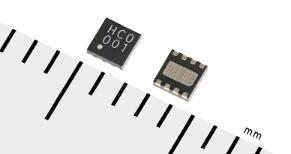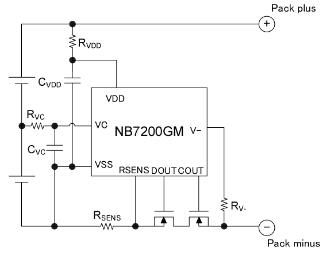Manufacturers
- Abracon
- Adam Tech
- Aerospace, Defense & Marine
- Agastat
- AIC
- AKM Semiconductor
- Alcoswitch
- Allegro
- Alps Electric
- Altera
- AMI Semiconductor
- AMP
- ams
- Analog Devices (ADI)
- Aptina Imaging
- Atmel
- Avago / Broadcom
- AVX
- Axicom
- Bccomponents
- Beyschlag
- BI Technologies
- Bourns Inc.
- Bowei Integrated Circuits
- Bridgelux
- Buchanan
- California Micro Devices
- Catalyst Semiconductor
- CGS
- Cirrus Logic
- Citizen Electronics
- CML Microcircuits
- Coiltronics
- Cooper Bussmann
- Corcom
- Core Logic
- Cree
- CSR PLC
- CTS
- Cypress Semiconductor
- Dale
- Data Image
- Deutsch
- Diodes Incorporated
- DOMINANT Opto Technologies
- E-T-A
- Eaton
- ECS
- Edison Opto
- Elcon
- EPCOS
- Epistar
- Epson
- Everlight Electronics
- Exar
- Fairchild Semiconductor
- FCI
- Freescale Semiconductor
- Fremont Micro Devices (FMD)
- Fujitsu Semiconductor
- Fulltech Electric
- General Semiconductor
- Harvatek
- Holsworthy
- Hsuan Mao Technology
- IDT
- Infineon Technologies
- Innolux
- International Rectifier (IR)
- Intersil
- IRC
- ISSI
- IXYS-IC
- Jing Cheng Electronical
- JL World
- Johanson Dielectrics
- Johanson Technology
- JRC / NJR
- JST
- KEC
- Kilovac
- Kingbright
- Kyocera Industrial Ceramics
- LEDiL
- Linear Technology / ADI
- Lite-On Technology
- Littelfuse
- Lumex
- Lumileds
- Luminary Micro
- Luminus Devices
- Macronix
- Maojwei / ZJPT
- Maxim Integrated
- MCC
- Mean Well Enterprises
- Microchip Technology
- Micron
- Microsemi
- Mini-Circuits
- Molex
- Murata Manufacturing
- Murata Power Solutions
- MWT
- National Semiconductor
- Nichicon
- Nippon Chemi-Con
- NJR / JRC
- NVE
- NXP Semiconductors
- OEG
- Omnivision
- ON Semiconductor
- Optek Technology
- Optrex
- OSRAM Opto Semiconductors
- OTAX
- Panasonic
- Peregrine(pSemi)
- Potter & Brumfield
- Power Integrations
- PowerStor
- Preci-Dip
- Prewell
- Products Unlimited
- Pulse Electronics
- PulseCore Semiconductor
- Qorvo
- Raychem
- Renesas Electronics
- RFMD
- Richtek Technology
- ROHM Semiconductor
- Rubycon
- Samsung Electro-Mechanics
- Samsung Semiconductor
- Schaffner
- Schrack
- Seiko Instruments, Inc. (SII)
- Semtech
- Sensata
- Seoul Semiconductor
- Sfernice
- Sharp Display
- Sharp Microelectronics
- Silicon Labs
- Siliconix
- Skyworks Solutions
- SoniCrest / JL World
- Spansion
- Sprague
- Stanley Electric
- STMicroelectronics
- Sunny Electronics
- Susumu (SSM)
- Taimag
- Taiyo Yuden
- TDK
- TDK-Lambda
- TE Connectivity
- Teccor
- Texas Instruments (TI)
- Thin Film
- Tianma Micro-electronics
- TOCOS
- TOKO
- Toshiba Electronic Components
- TT Electronics
- Tusonix
- TXC
- Tyntek
- Vishay
- Vishay Precision Group
- Vitramon
- Walsin Technology
- Weidmuller
- Welwyn
- Wickmann
- Winbond
- Xilinx
- Yageo
- Zetex Semiconductors
- ZJPT / Maojwei
News
New Product: NB7200 Series, 2-cell Li-ion Battery Protection IC
2022-08-31 | ReturnOverview
Applications using 2-cell Li-ion batteries have been mainly such as digital cameras, portable DVDs, tablet PCs, intercoms, and these days they are increasing in such as electrically assisted bicycles, beauty and health equipment, toys, small power tools, cleaners. Smartphones have been mostly 1-cell models until recently, and 2-cell models are also now available due to the need for high-capacity and rapid charging.
The NB7200 series features the industry-leading high-accuracy overcharge, overdischarge, and discharge overcurrent detection for 2-cell battery applications, as well as improved current detection accuracy by using an external resistor. In addition, a small package DFN1616-8 (1.6 x 1.6 x 0.4 mm) is adopted. The high accuracy, low power consumption, and space-saving design will help customers improve the competitiveness of their Li-ion battery applications.

NB7200 series (DFN1616-8-GM package)
Product Name |
NB7200 Series |
Sample Price |
JPY 110 (Tax Included / 1,000 pcs) |
Sample Order Start Date |
August 31, 2022 |
Package |
DFN1616-8-GM (1.6 × 1.6 × 0.4 mm) |
Monthly Production |
10 million |
Features
1. Industry-leading High-accuracy Overcharge Detection (OVP) (25% improvement compared to our conventional product)
Overcharge detection voltage range of each cell: 4.2 V to 4.8V, Accuracy: ±15 mV
The improved accuracy contributes to strengthening safety in the trend of charging voltage increase.
2. Industry-leading High-accuracy Overdischarge Detection (UVP) (30% improvement compared to our conventional product)
Overdischarge detection voltage range of each cell: 2.0 V to 3.2 V, Accuracy: ±35 mV
This contributes to longer battery life by enabling the remaining battery charge to be used as close to an allowable value as possible.
3. Industry-leading High-accuracy Two-step Discharge Overcurrent Detection
○ Voltage range: 0.003 V to 0.030 V, Accuracy: ±1 mV
○ Voltage range: 0.010 V to 0.040 V, Accuracy: ±2 mV,
0.040 V to 0.050 V, Accuracy: ±5%,
0.050 V to 0.090 V, Accuracy: ±2.5 mV
The low voltage and higher accuracy of the overcurrent detection allows using a sense resistor with low resistance. This reduces the impedance of a battery pack, thereby reducing the heat generation at high currents and simplifying the thermal design of a board.
4. Low Supply Current
(Normal Mode) Typ. 2.0 µA / Max. 4.0 µA
(Standby Mode) Max. 0.2 μA (Auto release type)
A longer operating time of applications is achieved thanks to low consumption current at normal mode and low standby current.
5. Industry-leading High-accuracy Short-circuit Detection Voltage (30% improvement compared to our conventional product)
Voltage range: 0.020 V to 0.100 V, Accuracy: ±4 mV
This feature contributes to strengthening safety of applications.
6. High-accuracy 0 V battery Charging Inhibition Voltage
Voltage range: 1.0 V to 1.5 V, Step: 50 mV, Accuracy: ±0.1 V
This makes it possible to meet fine requirements.
7. Adoption of Sense Resistor
The NB7200 series is our first 2-cell Li-ion battery protection IC that adopts the overcurrent detection with an external resistor. Thanks to the feature, the new product achieves higher accuracy of current detection compared to conventional FET-sensing models, even with temperature characteristics considered.
8. Package
A leadless and ultra-small package, DFN1616-8-GM (1.6 × 1.6 × 0.4 mm) is adopted.
Specifications
Absolute Maximum Ratings |
12 V |
Sense Type |
Rsens |
Consumption Current |
Typ. 2.0 µA (at normal mode) |
Standby Current |
Auto Release type 0.20 µA (Max) |
OVP Detection Voltage Range |
4.2 V to 4.8 V |
OVP Detection Voltage Accuracy |
±15 mV |
UVP Detection Voltage Range |
2.0 V to 3.2 V |
UVP Detection Voltage Accuracy |
±35 mV |
For more details about the NB7200 series
Typical Application Circuit

Source: https://www.nisshinbo-microdevices.co.jp





